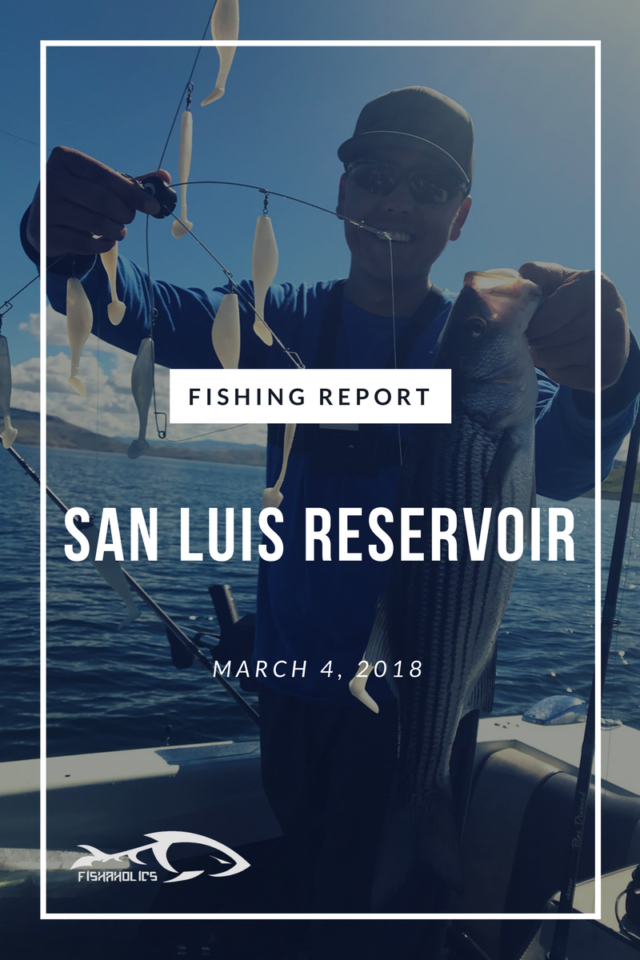
Fishing Report: San Luis Reservoir March 5, 2018
These fishing reports I post up are just a small glimpse into the overall action at San Luis Reservoir or any where I fish. Even if you don’t use the same techniques I use or baits, you can take away from it things that can help. Things like colors that work, locations or type of terrain just to name a few. If it’s a slow day for me, maybe they’re biting on cut or live baits. Who knows. Use the info to your advantage. I should be your base line.
The day before the trip, it was windy and rough out on the water. They actually red lighted the lake so boaters had to head back early.
Plus we had a cold front come through. Most seasoned anglers know that unstable weather makes for hard fishing and yesterdays trip was true of that.
I actually called the wind hot line for San Luis Reservoir on the way there (Here’s the number for those of you who don’t know: 1-800-805-4805). It was 0 mph according to the wind lady. Great! No rough waters.
We hit San Luis Reservoir in the morning with Lennie, Nick, some of the kids and I. It was a chilli morning with water temperature in the low to mid 50s. We started out in Portuguese Cove cause that’s where we had the most luck last time. Crickets…
Not a fish was biting or in sight.
So we trolled into Lone Oak Bay the hot spot from a few months ago and…Nada.
Usually when they’re nowhere to be found in the flats or coves, I usually find them on structure. Last time that happen to me, they were in 100′ of water but in a channel. So I pulled out my map app on my phone (the default map app on any Iphone) and looked around the lake. I found one on the west side of the lake and off we went.
Any new area that I’m unfamiliar with, I usually scan with the fishfinder before trying it. It saves alot of time wasted on an unproductive area.
First location, we found them stacked! When I talk about stacked, I mean stripers staging on top of one another vertically in a small area. Crappie and bluegills tend to do this in deeper waters too. I find these marks to be the best and easiest fish to catch.
So I marked the location. We setup our poles and with our Atlas Rigs ready, trolled right over them. First pass and I can see they haven’t moved. Few seconds later our rods start going off but no fish. Short strikes only.
Another pass and they were gone. We trolled the area trying to locate them again but couldn’t mark anything. So we moved on.
It was starting to look like a tough trip. We headed over to the Basalt side to give it a try. I remember seeing a channel over there as well. So it was worth a shot.
You know. I hear people talk about honey holes all the time. But realistically, they should be talking about structure. Because fish relate differently to structure from day to day and even hourly. Your honey hole could be a submerged island that fish only hold up mid day before moving shallower or deeper later. It’s not a honey hole if you’re not pulling in fish all the time on every single trip. The fish hatchery, now that’s a honey hole. Now if only DFW would let us fish in it.
If you just move from structure to structure through out the day to see if the fish are there, that’s all there really is to it. If you spot them, fish the area. If you don’t, move on.
So a little knowledge of the lake and how to fish the type of structure comes in handy. Plus you need to have the right tools to get the job done. My tools of choice for San Luis Reservoir: Downriggers and the Atlas Rig.
So back to our trip. We dropped the Atlas Rigs down to about 50′ over this channel and on the first pass, I hookup!
It was a heavy one, ussually a good sign. So I let my son reel it in. He’s having a hard time but slowly it was coming up.
Somewhere along the way, the line goes slack for a second and gone was our first catch of the day.
So we knew there were active fish in the area. All we had to do was keep trolling. We didn’t mark this particular fish but it was a confidence booster for the area.
We continued to Fisherman’s point in 30′-40′ of water and my rod gets slammed. It popped the line out of the clip and you could see the rod pumping as the fish was trying to shake off the Atlas Rig. It was another heavy fish just like the previous one. The kids were “busy” so I decided to reel this one in myself right away.
The striper ended up being the biggest catch of the day at around 23″. Finally a glimmer of hope that the fish were starting to get active.
We trolled the area for awhile before moving on. The fish just weren’t biting any more.
Next location were the coves by Dinosaur Point. Experienced shore anglers have been successful making the long hike to fish from shore. Patricio Parra on FishAholics is a regular in this area and he’s always slaying them.
We started shallow close to the banks. It was noon at this point. We trolled a few coves right up against the banks but couldn’t get anything to bite. We weren’t marking anything either. So it was back to deeper water.
We left the area and on the way out, I spot a change in elevation. You can see in the screen shot above I was hauling down the lake before slowing down from the disturbances on the left of the screen. It shows me making two passes over the same area before saving the image so don’t confuse this for two separate locations.
I slowed down and turned back to scan the area with my Humminbird 598 fish finder again. To my surprise, I found them stacked up! The location looked like a submerged island since it was pretty far from shore.
So, I went out alittle ways to give us room to setup our rigs before trolling through the area. We trolled right through them with the Atlas Rigs.
On the first pass, a few rods were bumped. One went off but no fish. Second pass, and it was fish on.
A third pass and they disappeared. We kept at it for a while but yielding nothing, we left.
That seemed to be the pattern. Fish would stack up on structure like channels and submerged islands but shy away after being fished. When you find them, you only get one or two passes before they scatter. Being mobile was key that day.
So back to the channel we found them stacked up earlier in the day. We trolled and scanned the same area but couldn’t find them any more.
We fish several other areas the rest of the day and went over some of the same locations we tried earlier but not much going on. We caught another fish or two but that was about it. We ended the day with 7 fish to 23″.
I hope you’re beginning to realize that fishing San Luis Reservoir isn’t as easy as it looks. Every trip we have to work our butts off to catch striped bass. Active stripers that are willing to bite that is. It’s an intimidating lake to fish but like I said, with the right tools and a little knowledge of the lake, you can stay consistent.
Now you know. Go get em!
You can find the same gear I use in the affiliate links below.
–Okuma Cold Water line counter reel
–Daiwa Wilderness Trolling Rod

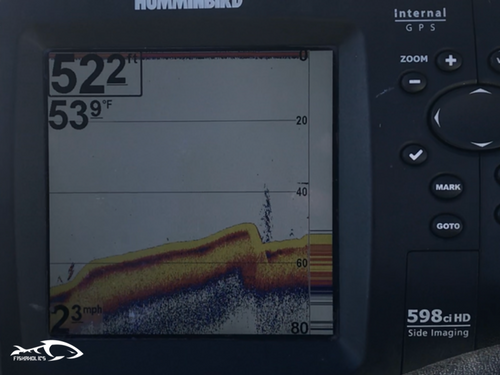
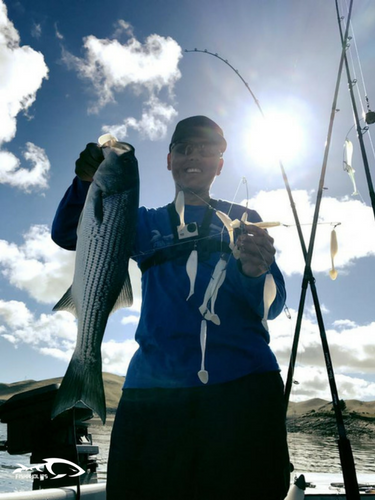
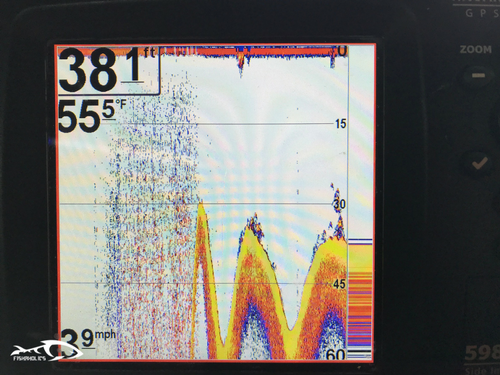
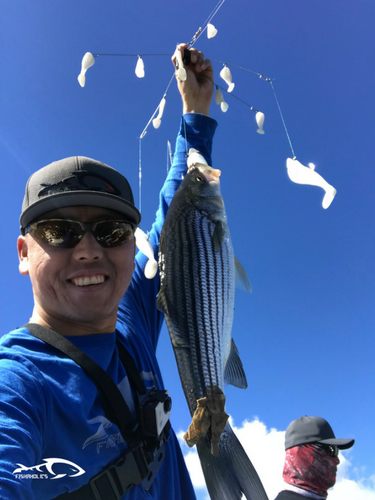
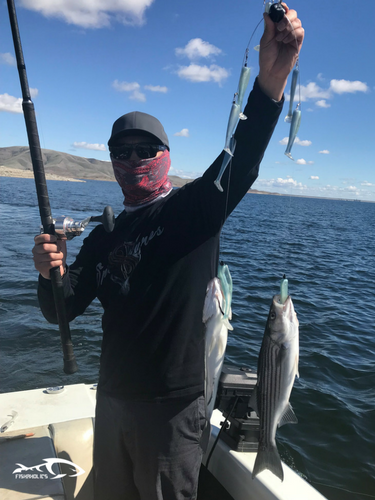
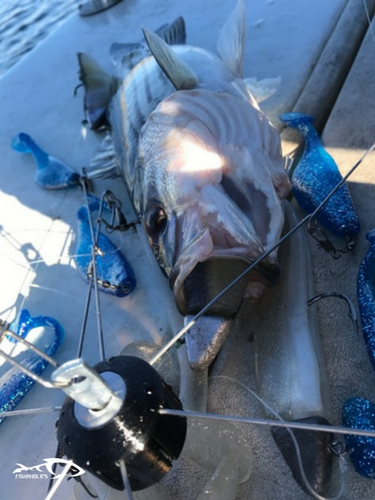
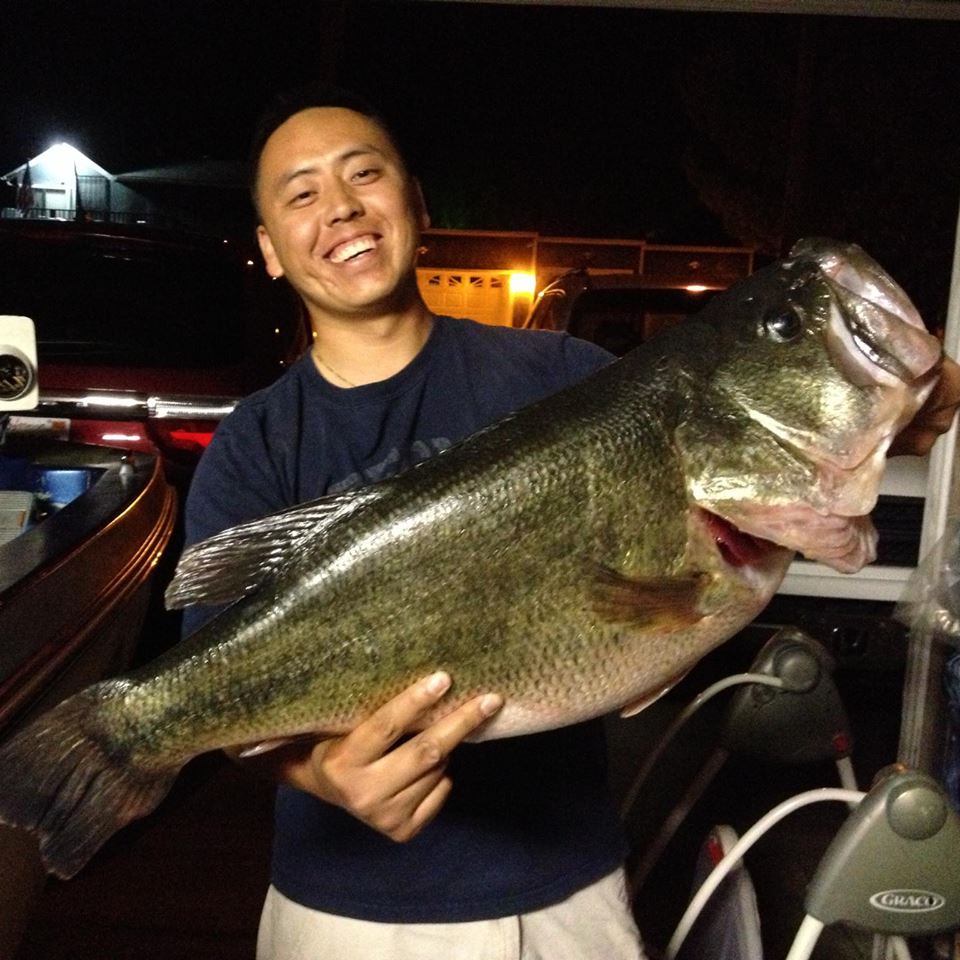
Thank you for all the info Meng. Someday I hope to get out there and hook up on some big ones. Tight lines FAm!
Just let me know. You know where to find me.
Awesome info! Thanks Meng!
Anytime brother
Once again Wonderful Information! Keep up the good work!
Thank you!
Today me and my neighbor went out to the St Louis Reservoir we got there around around 11:30 this morning and not even 5 minutes after we got there my neighbor hat hooks a 40 lb catfish and the head of the cat faces look like a head of a Rottweiler. Then two seconds after that I hooked the 30 lb catfish myself . I use the Nightcrawler.
Congrats! I knew there were some big cats in there but never heard of someone hooking into them. Must’ve been a great fight too.